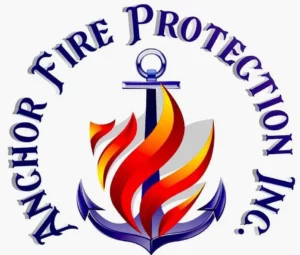Fire Sprinklers Inspections - All You Need to Know
Have you ever wondered how crucial fire sprinklers are in safeguarding lives and property? A small spark has the potential to turn into a raging inferno within minutes. Imagine a system that quietly protects against such disasters, acting as an unsung hero. In this blog post, we’ll delve into fire sprinkler inspections, discussing the importance, intricacies, and must-know facts. Now, let’s dive into the details of fire safety:
How to Check the Sprinkler System? What Is Included In Its Inspection?
In accordance with NFPA 25, visual fire sprinkler inspection requirements should include:
- Detecting any unintended leakage.
- Identifying corrosion that could hinder the sprinkler’s effectiveness.
- Assessing any harm to the sprinkler’s structure.
Ensuring the integrity of the fluid within the heat-responsive element. - Checking for any added weight that may impede the sprinkler’s functionality.
Verifying that only manufacturer-applied paint is present. - Ensuring proper installation orientation.
- Confirming that adequate clearance is sustained.
These conditions can significantly impact sprinkler performance by disrupting water distribution patterns, insulating thermal elements or causing delays in operation.
It’s crucial to note that the visual inspection doesn’t extend to verifying the design or layout of the sprinkler system. Inspectors may report design-related observations separately, and owners are responsible for obtaining a design evaluation if modifications have been made.
How Often Should I Have My Fire Sprinkler System Check?
Ensuring the proper inspection frequency for your fire sprinkler system is a common concern among our clients. The answer depends on your building’s needs, type, size, and adherence to local codes.
There are two crucial times for fire sprinkler inspections:
Quarterly Sprinkler Inspection
- Less detailed and quicker than annual inspections.
- Involves an overview of minor defects.
- Testing alarm devices and ensuring adequate water supply.
- Though seemingly less significant than annual inspections, quarterly checks are vital for meeting local fire codes.
Annually or 5 Year Sprinkler Inspection
- Includes all aspects of quarterly inspections.
- Conducts a comprehensive visual examination of the system.
- Identifies defective heads, rusted pipes, corrosion, and other impairments.
- Requires more time and access to all covered areas, exercising control valves and conducting flow testing if applicable.
Fire Sprinkler Inspections Checklist
Regular inspection of your fire sprinkler system is crucial. Let’s delve deeper into the checklist that you must follow during your fire sprinkler inspections:
Check for Defects
- During quarterly inspections, look for broken sprinkler heads, damaged pipes, or any other issues.
- Highlight painted-over sprinkler heads, as only manufacturers should handle this task to prevent malfunctions.
- Thoroughly assess every essential element to identify and replace any defective parts.
Test Sprinkler System Alarm Functionality
- Conduct a multi-step procedure by notifying building occupants about the upcoming sprinkler system test.
- Test the sprinkler system alarms to ensure proper functionality, including the inspector’s test to assess the alarm and water flow alarm.
- The inspector’s test is a simulation, ensuring no actual sprinklers are activated during the examination.
Perform the Main Drain Test
- The main drain test evaluates the condition of the water supply to a fire sprinkler system.
- Open the fire sprinkler system’s water supply fully to detect deterioration in the main piping.
- Pay attention to potential obstructions in the main drain that could lead to water supply failures.
How to Prepare for Testing and Inspection?
Gather Inspection Records
Have your fire inspection and maintenance records readily available for the technician upon their arrival. This includes any relevant documentation about the history and status of your system.
Ensure Accessibility
Have a System Expert On-Site
It’s beneficial to have someone familiar with your system present on-site. This individual can provide valuable insights, answer questions, and assist the technician in navigating the property effectively.
Risk of Not Having Inspections and Testing Done
Neglecting your fire sprinkler system’s routine inspections and testing poses a significant risk that extends beyond mere inconvenience. Over time, the components of a fire sprinkler system can deteriorate, leading to false triggers or, worse, complete malfunctions during a real emergency.
The consequences of such malfunctions are twofold. Firstly, false triggers can result in unnecessary water discharge, causing property damage and harming valuable equipment or sensitive files in the building. This causes financial losses, disrupts business operations, and compromises vital data.
More alarmingly, the absence of regular inspections and testing leaves the building vulnerable in the face of an actual fire. In a fire outbreak, a malfunctioning or non-operational sprinkler system can lead to uncontrolled fire spread, resulting in immense property damage.
Moreover, the lack of an effective fire suppression system increases the risk of personal injuries and fatalities. The potential for loss of life and severe injuries underscores the importance of maintaining a reliable and fully operational fire sprinkler system.
Need a Fire Sprinkler Inspection? Contact Anchor Fire Protection Inc. Today!
Ensure the safety of your facility with regular maintenance, costing an average of $1,000-$5,000 per year based on building size. Though an upfront expense, it pales compared to the $20,000-plus average cost of catching up after neglecting recommended inspections.
Contact Anchor Fire Protection Inc. for scheduled quarterly and annual fire sprinkler inspections. We ensure the proper functioning of a sprinkler system, and our inspection aligns with local codes, occupancy types, and system components.
Don’t hesitate—call us today to discuss your sprinkler inspection options and prioritize the safety of your space.
Conclusion
KEEP YOUR PROPERTY SAFE
Related posts
-
Fire Safety Tips for the Workplace
-
Fire Safety Tips for Hospitals
-
How to size fire pumps?
-
Different types of sprinklers?
-
What is fire protection system?
-
Fire Extinguisher Inspection
-
Fire Sprinkler System Components
-
What are the most common types of fire pumps?
-
How much does a fire sprinkler system cost?
-
What is active and passive fire protection?

